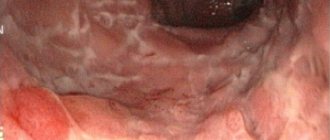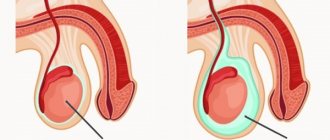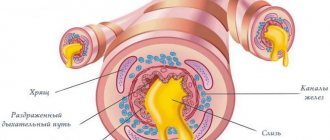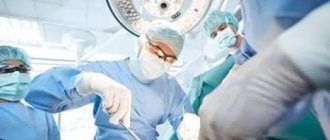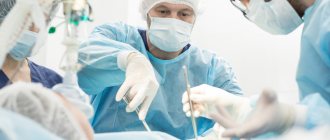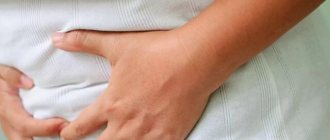Bloating is a functional disorder that is formed as a result of excessive accumulation of gases in the digestive organs.
An increase in intestinal size can be caused by a large number of different predisposing factors, which can be both pathological and physiological. Often this manifestation is accompanied by a certain pathology of the gastrointestinal tract.
Symptoms of bloating include increased gas production, minor pain, belching, heaviness in the abdomen and an unpleasant taste in the mouth.
To determine the causes of flatulence, a number of instrumental and laboratory diagnostic measures are required. Therapy is, as a rule, conservative in nature and is aimed at the use of certain medications, adherence to a special diet and the use of traditional medicine recipes.
Description of the disease
It should be noted that the formation of gases in itself is normal. During the day, up to 20 liters of them circulate through the body of a healthy person.
Gas formation in an adult without signs of pathology is caused by physiological processes. Continuous circulation of acceptable volumes does not cause discomfort and proceeds unnoticed.
A healthy intestine constantly contains up to 200 ml of gases, and the source of their appearance is as follows:
- Gases synthesized during the breakdown of food (hydrogen, methane, nitrogen, sulfur) – 75%.
- A reaction product of stomach acid and pancreatic juice.
- The result of air entering during the respiratory function, when swallowing.
Gases formed by physiological processes leave the body naturally:
- through the rectum - a passage of flatulence or “farting”;
- when belching;
- during the process of exhaling air.
A certain proportion of gases in the intestine is absorbed by the walls and distributed into the bloodstream. In which direction the accumulated substance will move towards the exit is determined by the muscle tone of the diaphragm, the peritoneal wall, and the activity and mobility of the intestine. It is worth noting that constipation, excessive compaction of feces, and disruption of metabolic processes lead to inadequate distribution of gases in the blood, which provokes the onset of their excessive accumulation.
The intensity of gas release is individual for each person, but it should be emphasized that during the day, through the rectum, it is released from 13 to 21 times a day, which is not considered flatulence. The passage of flatulence is a natural physiological process.
Flatulence
The information in this section cannot be used for self-diagnosis and self-treatment.
In case of pain or other exacerbation of the disease, diagnostic tests should be prescribed only by the attending physician. To make a diagnosis and properly prescribe treatment, you should contact your doctor. Flatulence - causes of occurrence, what diseases it occurs with, diagnosis and methods of treatment.
Excessive gas formation in the gastrointestinal tract leads to severe discomfort, especially if it is impossible to retain gases. Gaseous substances that fill the lumen of the stomach and intestines include hydrogen, methane, hydrogen sulfide and carbon dioxide.
Along with food, air can enter the stomach, but gases are mainly a product of the vital activity of microorganisms, and also arise as a result of the interaction of hydrochloric acid of the stomach with bicarbonate coming from the pancreas.
Increased gas formation is accompanied by bloating, a feeling of fullness and pain. This phenomenon is called flatulence.
In some cases, the release of gases is hampered by spastic conditions of the gastrointestinal tract, and sometimes a person cannot control this process even if the content of gases in the intestines is insignificant.
Types of flatulence
Flatulence occurs when gas formation processes intensify and intestinal motility deteriorates.
Excess gases are removed from the stomach by belching
, from the intestines -
through the rectum
. In addition, gases can enter the blood and be released in the exhaled air. Gases formed in the intestines are absorbed only in the small intestine, where their bubbles are mixed with the liquid contents.
In the colon, gases are not absorbed into the blood due to the high density of feces, so the only way out for them is through the rectum, which happens on average 15-20 times a day.
Participating in the regulation of intestinal function, gases have different effects on its function: methane slows down the passage of feces and promotes the development of constipation, hydrogen reduces the motility of the ileum, but promotes the movement of contents in the final sections of the colon.
Possible causes of increased formation and incontinence of gases
The reasons for the development of flatulence may be related to: 1) dietary habits; 2) indigestion; 3) an imbalance in the composition of the intestinal microflora; 4) impaired intestinal motility.
Overfilling of the stomach with gases leads to belching, which often bothers patients with incomplete closure of the cardiac sphincter due to hiatal hernia or gastroesophageal reflux disease.
.
In addition, impaired motility of the gastrointestinal tract with gastric ulcers, biliary dyskinesia, and some intestinal diseases
also accompanied by frequent belching, sometimes even with regurgitation.
With the development of putrefactive processes in the stomach during gastroparesis
, belching may have an unpleasant odor.
However, often belching is not a symptom of a disease, but an indicator of poor nutrition.
For example, when hastily eating food, a person may swallow a large amount of air. Also, excess gas in the stomach occurs after drinking carbonated drinks.
If gases fill the intestines, a feeling of bloating appears.
It can occur due to excess content of gaseous substances, or it can be subjective due to the increased sensitivity of the intestinal mucosa.
Often this symptom occurs in functional disorders: irritable bowel syndrome, pancreatic diseases
accompanied by enzymatic deficiency and proliferation of pathological microflora.
Increased formation of gases occurs when consuming large quantities of legumes, cabbage, onions, carrots, raisins, bananas, apples, grapes, and yeast dough products. Evidence of functional disorders is the appearance of bloating some time after eating.
In the morning, before breakfast, this feeling is absent.
An unpleasant symptom is gas incontinence, which is possible even with a slight accumulation in the intestines. This problem may occur in patients with fissures and fistulas in the anus.
Gas incontinence is also a concern for patients with anal sphincter insufficiency.
As a rule, this condition accompanies other types of pathology - hemorrhoids, rectal prolapse. Sometimes, insufficiency of the internal anal sphincter can be a consequence of neurological disorders, surgical interventions or trauma, accompanied by the formation of scars and strictures.
The sphincter muscles weaken with age, which is why the problem of gas incontinence is more common in older people.
With intestinal diverticula - sac-like protrusions of the mucous membrane and submucosa of the intestine - bloating and copious discharge of gases are almost always observed.
In addition, there are feelings of fullness and heaviness in the abdomen, pain in the left iliac region and irregular, spastic stools (“sheep”). Rumbling in the stomach and frequent passage of gases with an unpleasant odor often occur.
In women, uncontrolled passage of gases develops in the last months of pregnancy, after childbirth due to pelvic floor dysfunction. The same problem is detected in a third of patients with uterine prolapse.
and in a small percentage of cases - with pathological
elongation of the cervix.
Gas incontinence occurs when the central nervous system is damaged due to injuries to the spine and head, and in this case it is accompanied by uncontrolled stool and urination.
During an epileptic seizure, urine, gases and feces may also be discharged during the relaxation phase.
Gas control is lost in mental disorders
(manic-depressive syndrome, dementia) and psycho-emotional stress.
Which doctors should I contact?
The problem of increased gas formation and uncontrolled release of gases can arise in various conditions of the body. In any case, you should visit a therapist for an initial examination. If symptoms of flatulence bother a woman during pregnancy, after childbirth, or the passage of gas is accompanied by other symptoms, you should consult a gynecologist. If you suspect intestinal diverticula, anal sphincter insufficiency or gastrointestinal dyskinesia, you should consult a gastroenterologist.
Diagnostics and examinations
If uncontrolled passage of gas occurs during pregnancy, after childbirth, as a rule, no additional examination is required. If you complain of constant passing of gas without symptoms of bloating, it is necessary to check the condition of the anal sphincter and intestines. To do this, sigmoidoscopy and colonoscopy are performed.
If gas incontinence is accompanied by bloating, pain, or a feeling of fullness, an examination of the entire gastrointestinal tract is required to exclude pathologies of the biliary tract, pancreas and intestines. To exclude diverticula, the doctor may prescribe a barium X-ray contrast study, colonoscopy, spiral CT scan, and a comprehensive ultrasound examination of the abdominal organs.
Biliary dyskinesia can be detected using ultrasound of the gallbladder and ultrasound of the pancreas.
If the doctor suspects impaired intestinal motility as the cause of flatulence, he may prescribe electrogastroenterography and manometry.
Laboratory tests should be carried out to assess enzyme deficiency and intestinal microflora.
In these cases, the information is general;
complex biochemical blood test with determination of total protein and albumin,
Total protein (in blood) (Protein total)
The most important indicator of protein metabolism. Blood plasma proteins perform many functions in the body, and protein levels are one of the most important laboratory indicators. Of the 9–10% of plasma dry matter, proteins account for 6.5–8.5%. The concentration of total protein in serum depends on...
175 RUR
Albumin (in blood) (Albumin)
The main protein in blood plasma. Albumin synthesis occurs in the liver. The relative molecular weight of albumin is 65,000 Da. The half-life is 18 – 20 days. Albumin maintains the colloid-osmotic (oncotic) pressure of plasma, and, accordingly, the volume of circulating blood. ...
210 rub.
Creatinine (in blood) (Creatinine)
A nitrogenous metabolite, the end product of the conversion of creatine phosphate, which is involved in the energy metabolism of muscle and other tissues. Creatinine synthesis occurs mainly in muscle tissue. During muscle contraction, creatine phosphate breaks down with the release of energy and the formation of cre...
175 RUR
Urea (in blood) (Urea)
The main end product of protein metabolism. About 50% of residual nitrogen (non-protein nitrogen-containing substances in the blood remaining after protein precipitation) is represented by urea. It is synthesized by the liver from amino acids in the Krebs cycle with the participation of enzyme systems. Synthesis is accompanied by absorption...
175 RUR
175 RUR
bilirubin and its fractions,
Bilirubin total
Blood pigment, a breakdown product of hemoglobin, myoglobin and cytochromes. Yellow hemochromic pigment is formed as a result of the breakdown of hemoglobin, myoglobin and cytochromes in the reticuloendothelial system of the spleen and liver. One of the main components of bile, it is also found in serum in...
175 RUR
Bilirubin direct (Bilirubin conjugated, bound; Bilirubin direct)
Fraction of total bilirubin in the blood, resulting from the processes of conjugation of free bilirubin in the liver. This is a combination of free bilirubin with glucuronic acid - bilirubin glucuronide. Highly soluble in water; penetrates into tissues, low toxicity; gives a direct reaction with diazorea...
175 RUR
Alkaline phosphatase (ALP)
An enzyme involved in phosphoric acid exchange reactions, with an optimum pH of 8.6 - 10.1. Catalyzes the hydrolysis of phosphoric acid esters and organic compounds. The highest concentration of ALP is found in bone tissue (osteoblasts), hepatocytes, renal tubular cells, mucous...
175 RUR
Pancreatic Alpha-amylase (P-isoenzyme of amylase)
An enzyme that catalyzes the hydrolysis of starch, glycogen and some saccharides. Produced by the pancreas. Breaks down starch and glycogen to maltose in the lumen of the duodenum. Excreted primarily in urine. When the pancreatic ducts are inflamed or blocked, when...
275 RUR
Lactate (Lactic acid, Lactate)
An important indicator of the acid-base state of the body; marker of tissue hypoperfusion. Lactic acid (lactate) is a product of anaerobic glucose metabolism (glycolysis), during which it is formed from pyruvate under the action of lactate dehydrogenase. With sufficient supply...
500 rub
Koprogramma, Stool
A combined description of the physical, chemical and microscopic examination of stool. Feces is the final product formed as a result of complex biochemical processes of food breakdown, absorption of digestion products in the gastrointestinal tract and excretion of metabolic products from the intestines. Ots...
350 rub.
Treatment
Bloating and increased gas production can be both a sign of illness and a consequence of poor diet and lifestyle. You can cope with these symptoms only by identifying their cause.
In any case, it is necessary to normalize the diet and exclude gas-forming products from the diet.
Functional disorders involve correction of gastrointestinal motility, microflora and elimination of enzymatic deficiency. It is also necessary to eliminate the causes of psycho-emotional stress. To reduce gas pressure in the intestines, adsorbents (activated carbon, etc.), carminatives, and enzymatic preparations are used.
If the cause of uncontrolled passage of gas is an insufficiency of the anal sphincter due to hemorrhoids, fissure or fistula, surgical treatment is necessary. For intestinal diverticula
non-drug treatment is possible, which involves changing lifestyle and diet.
Patients are not recommended to undergo cleansing enemas or use of laxatives. The diet should include foods rich in plant fiber.
Antispasmodics, phosphodiesterase inhibitors, non-selective calcium channel antagonists and water-soluble fiber preparations are used as drug therapy.
What should you do if you have flatulence?
With increased gas formation and bloating, it is advisable to identify those foods that cause flatulence and abandon them or reduce their quantity.
After normalization of digestion processes, these products should be introduced into the diet gradually, helping the intestines with enzyme preparations. Improvement of peristalsis is facilitated by the consumption of a sufficient amount of liquid - up to 2-2.5 liters per day.
It is advisable not to eat foods containing large amounts of fat and sweet foods. Fermentation in the intestines is also promoted by fruits and foods containing yeast. Before cooking legumes (which contribute to flatulence), you should first soak them in water.
It is very important to eat properly to prevent swallowing air while eating.
You should eat slowly, avoiding a lying position. An active lifestyle and moderate physical activity help reduce flatulence.
The information in this section cannot be used for self-diagnosis and self-treatment. In case of pain or other exacerbation of the disease, diagnostic tests should be prescribed only by the attending physician. To make a diagnosis and properly prescribe treatment, you should contact your doctor.
Source: https://www.invitro.ru/library/simptomy/18433/
Reasons for appearance
The causes of bloating in adults are not limited to physiological processes. There are many of them, they are different and the symptoms expand significantly. Before prescribing adequate therapeutic regimens, it is important to identify and eliminate the negative factor that provoked the pathology.
Possible causes of flatulence:
- Dysfunction of the enzyme system leads to insufficient production of enzymes. The food processing process is disrupted. From the upper parts of the digestive system, large volumes of unprocessed food fragments enter the intestines. They undergo putrefactive processes and fermentation, which leads to intense gas formation. The cause of excess accumulation of gases, most often in this case, is a violation of the diet.
- Dysbacteriosis occupies a leading position among the negative influence factors. In a healthy body, most of the gases are consumed by microflora. If an imbalance of beneficial and harmful bacteria is detected in the terminal sections, the gases that are absorbed by microorganisms for normal functioning remain in excess and consistently lead to flatulence.
- After operations on organs located in the peritoneum, stretching of the intestinal walls occurs. Motor activity and motility of the thermal areas decreases. As a result, food does not move through the intestines fully, and the processes of rotting and fermentation begin. Flatulence can also be caused by the formation of postoperative adhesions.
- The quality of food consumed, volumes and diet may well be the cause of signs of pathological bloating. Some products provoke fermentation processes, while others promote rotting. In case of lactose intolerance, milk is a stimulator of unpleasant processes.
- Psycho-emotional shocks do not pass without leaving a trace. The digestive system is the first to respond to stress. Spasm of the intestinal muscles inhibits the function of the organ.
- With age, many hidden forms of diseases make themselves felt. Atrophy of the muscular layer of the intestine leads to flatulence in patients 65+.
Whatever causes bloating or cramps, it is absolutely necessary to treat flatulence in adults to prevent the development of complications.
Important! Without determining the exact cause of the symptoms, all therapeutic actions can only be aimed at eliminating the symptom, which brings temporary relief.
Diagnosis of gastrointestinal diseases
A doctor will help identify the cause of the disorder in the body.
Gastroenterologist:
- Fill out a personal medical record, collect an anamnesis of the patient’s life and illness, and listen to complaints.
- Will conduct an inspection. It includes: palpation (palpation), auscultation (listening with a special device), percussion (tapping organs).
- Conduct anthropometry (measurement of a person’s height, weight, waist, chest, and head circumference).
- Will refer you for blood, urine and stool tests. General and biochemical blood tests will indicate the presence of inflammatory processes. The level of glucose, uric acid, enzymes, the amount of bilirubin and other components will be determined.
A stool test for worm eggs will reveal the presence of parasites in the body. The coprogram will indicate disturbances in enzymatic function. Stool culture for dysbacteriosis will help confirm or refute the corresponding diagnosis.
- X-rays with a contrast agent will show the presence of a mechanical obstacle to the movement of masses and gases in the intestine.
- Diagnosis of diseases using FGDS gives a detailed picture of the condition of the mucous membranes of the gastrointestinal tract and allows you to take material for research. The manipulation is carried out with a special flexible tube with a flashlight, camera and tweezers.
- Colonoscopy is performed using a flexible probe, a light, an eyepiece, a tube and forceps. The device is carefully inserted into the rectum after mandatory preliminary preparation.
What diseases cause bloating?
Gas formation in the intestines.
Mostly, a symptom accompanied by bloating and abdominal pain makes itself felt in the presence of the following pathologies:
- gastritis, leads to disruption of the processes of protein breakdown, which, once in the intestines, provoke fermentation due to changes in the acidity of gastric juice;
- enteritis – provokes the manifestation of signs of flatulence with dysfunction of digestion and absorption due to pathological transformations of the mucous tissue;
- cirrhosis - causes disruption of the liver, which leads to insufficient synthesis of secretions that contribute to the complete processing of fats;
- intestinal obstruction – does not allow food to move normally;
- atony - causes flatulence because feces accumulate gases due to a decrease in the speed of movement;
- cholecystitis is a pathology, during the development of which, the inflamed gallbladder disrupts the outflow of secretions, which leads to dysfunction of the duodenum;
- pancreatitis – accompanied by flatulence due to defective enzymatic function of the pancreas;
- colitis – characterized by foci of inflammation and dystrophy of the large intestine, which leads to an imbalance of microflora and digestive disorders;
- intestinal infections - when ingested with food, lead to disruption of peristalsis and food absorption;
- diverticula of various etiologies.
Gas formation may occur for one of the reasons listed above. Since an adult can be a carrier of a whole “bouquet” of pathologies, negative influence factors are layered, complicating the course of the disease.
Diseases that can cause a pathological condition
Flatulence, constipation or, conversely, loose stool may not be an independent pathology, but only symptoms of a certain disease. Medical science refers to such diseases as:
- Dysbacteriosis, which most often occurs after taking antibacterial drugs that disrupt the natural balance of pathological and beneficial microflora on the intestinal mucosa.
- Diseases of the pancreas when an insufficient amount of enzymes is produced.
- Tumors in the gastrointestinal tract that obstruct the passage of stomach or intestinal contents.
- Colitis is an inflammatory process in certain areas of the intestine.
- Gallbladder diseases.
- Gallstones.
Gas formation can also be caused by allergic reactions, which can manifest not only with bloating and stool disturbances, but also with a variety of skin lesions.
We looked at the causes and treatment of bloating in adults.
Flatulence during pregnancy
Abdominal bloating during pregnancy is not considered normal, since measures not taken can lead to: hypertonicity of the uterus, sleep disturbances, and loss of strength. Abdominal bloating in early pregnancy can cause miscarriage. In women during pregnancy, the causes of flatulence may be:
- enzyme deficiency;
- pathologies of the digestive system;
- poor nutrition, non-compliance with the diet;
- insufficient amount of water consumed;
- dysbacteriosis;
- the action of progesterone;
- compression of the loops of the colon.
Since the treatment of pregnant women differs from the treatment of other patients, to alleviate symptoms, food habits should be reviewed in detail. Proper, balanced food intake and exclusion of foods that cause bloating from the diet will significantly improve the situation.
Symptoms of the pathological phenomenon
There are certain clinical manifestations that are characteristic of this type of digestive disorder. Symptoms of bloating in the intestines are:
- Constant heaviness in the stomach.
- Regular belching that occurs after eating food.
- Uncontrolled release of gases.
- Flatulence.
- An unpleasant taste in the mouth that is not related to food consumption.
- Decreased or lack of appetite, which is usually psychological in nature, since bloating occurs after eating and the person tries to avoid it.
- Sleep disturbance.
- Excessive irritability.
- The appearance of characteristic rumbling in the intestines.
So, now the symptoms and causes of bloating are known. We will consider the treatment of this disease a little later.
Symptoms of the disease
The clinical picture of flatulence is pronounced; it is not difficult to determine excess gas formation in adults. Additional symptoms:
- increased release of gases through the anus;
- distension and increase in abdominal volume;
- frequent belching;
- pain and discomfort in the peritoneum.
The pain with this symptom is predominantly dull or aching, without a specific location. During auscultation, the patient hears loud rumbling sounds. Acute pain in the form of attacks is possible in cases where the accumulation of gases causes colic. Flatulence provokes symptoms that negatively affect the quality of life:
- attacks of nausea, vomiting;
- bad breath;
- bowel dysfunction (constipation, diarrhea);
- refusal to eat.
Sometimes, in order to relieve symptoms, it is enough to release gases in an adult - the passage of flatulence in this case is an emergency aid.
Symptoms of bloating
The main symptoms of bloating are:
- constant or recurrent pain, discomfort in the abdominal area;
- Regularly formed gases in excess quantities;
- rumbling;
- belching.
During the examination, the doctor may also notice:
- increased body temperature;
- decreased appetite;
- weight loss;
- pain in the peri-umbilical region upon palpation of the abdomen;
- joint pain;
- weakening or strengthening of peristaltic noises (in rare cases, their complete absence).
Diagnostics
The therapist begins examining the patient. Listening to complaints, examination and the results of general research help determine which direction to move next. Since there are many reasons for the formation of gases, therapeutic regimens will most likely be drawn up by a gastroenterologist, after the patient has undergone:
- radiography;
- colonoscopy;
- CT – computed tomography of the peritoneum;
- laboratory methods for studying feces, urine, blood.
Only by collecting medical history data, studying the patient’s diet, and receiving the results of instrumental and laboratory studies can a diagnosis be established. Having a clear idea of what pathology is to be dealt with, the doctor prescribes adequate treatment.
Diagnosis of this pathology
Since a large number of different factors can provoke the appearance of such an unpleasant condition, determining the correct diagnosis must have an integrated approach. After identifying the prerequisites for this disorder, the specialist can develop appropriate treatment tactics, prescribe the most effective medications for bloating, and determine other areas of therapy.
The initial stage of diagnostic measures is as follows:
- Questioning the patient about the presence of bloating and the severity of its symptoms.
- Studying the patient's medical history and medical history.
- Carrying out a physical examination, which must necessarily include percussion and palpation of the anterior wall of the peritoneum.
Some laboratory tests are also carried out, including the following tests:
- A general clinical blood test that allows you to identify the presence of inflammatory processes in the body.
- Blood biochemistry, which serves as a method for determining functional disorders in the functioning of the gastrointestinal tract.
- Examination of feces under a microscope, carried out to assess the state of microflora in the intestines, as well as to detect various parasites.
An important part of the diagnosis consists of some instrumental examinations, which include:
- X-ray of the intestines with the introduction of a contrast agent into the blood, which is carried out to evaluate the characteristics of intestinal motility.
- Ultrasound of internal organs - to determine the presence or absence of various neoplasms and structural abnormalities.
- Endoscopic examination of certain areas or the entire digestive tract. Among such procedures, sigmoidoscopy, colonoscopy, gastroscopy, etc. should be highlighted.
Only after receiving accurate data from diagnostic procedures, the specialist prescribes therapy individual for each patient.
Drug treatment
The choice of remedies for flatulence in adults is quite varied. What exactly the gastroenterologist will choose in a particular case will depend on the clinical picture.
The doctor prescribes medications that simultaneously eliminate the symptom and have a detrimental effect on the pathology. First of all, complex treatment includes carminative medications for bloating and antifoams. "Espumizan" destroys accumulations of foam located along the colon, thus releasing gases.
The use of enterosorbents is advisable, although they have no effect on gases. Their direct action is aimed at absorbing carbohydrates and bacteria that cause fermentation. The most commonly used sorbents in the home medicine cabinet are:
- activated carbon - commonly used tablets for bloating;
- "Polysorb";
- "Enterosgel";
- "Smecta".
If the cause of the disease is dysbacteriosis, it is worth replenishing the concentration of missing lactobacilli with probiotics (Bifidumbacterin, Linex).
If there is a lack of enzymes produced by bile, digestion can be improved with Mezim and Pancreatin.
If discomfort is accompanied by aching pain and colic, No-shpu and Papaverine are prescribed. They are more effective in cases of intense gas formation.
Causes and treatment of gas formation in women
When increased gas formation occurs in women, the causes and treatment, as well as methods for preventing such an unpleasant condition, depend on a number of factors.
Both lifestyle and the presence of chronic diseases or acute conditions can provoke intestinal flatulence. Increased gas formation is accompanied by an unpleasant sensation of distension in the abdomen. This condition often becomes noticeable to others due to a visible enlargement of the abdomen, loud rumbling and involuntary gas. If with slight swelling it is possible to control the release of gases, although with difficulty, then with large volumes it is problematic to do this.
Folk remedies for flatulence
Patients often use folk remedies for bloating, as they eliminate symptoms quickly and are more affordable. It should be noted that any changes to the conservative treatment regimen should be discussed with your doctor.
Typically, herbal infusions, teas, and tinctures work well when used for prophylactic purposes. You should be aware that herbs can enhance or suppress the effects of medications. The approach to alternative methods of therapy must be reasonable.
Home methods:
- Mustard (1 tsp dry), diluted in water (200 ml) - drunk at one time (warm). The remedy is used when severe flatulence bothers you.
- Baking soda: mix the juice of half a lemon, 1 tsp. soda, water (200 ml). Drink immediately to induce belching. Baking soda helps to quickly get rid of bloating.
- Tea with mint is drunk before bed as a means of prevention if gas is often bothered at night.
Causes of increased gas formation in women
What causes bloating and gas in adults? The main reason is decreased intestinal motility.
As a result, food moves slowly, stagnates, and fermentation begins.
All the reasons that lead to this condition can be divided into two groups:
- Related to work problems/illness.
- Caused by the temporary state of the body.
Nutrition
A swollen stomach is most often caused by poor nutrition.
Both a lack and an excess of dietary fiber in the diet and eating on the go can lead to this condition. In a hurry, a person swallows a large amount of air with food. It irritates the mucous membrane and causes excess gas formation. Women often like to chat while eating. This also leads to air being swallowed.
Flatulence can also be caused by:
- Eating foods that release large amounts of gases when digested. These are legumes, cabbage, apples, soda.
- Foods that provoke fermentation are yeast baked goods, industrial juices, kvass, beer.
- Simultaneous consumption of foods with different digestion times. Fatty meat takes several hours to digest, a glass of juice takes a few minutes, and a salad takes no more than an hour. If you eat all this together and add white bread, fermentation and increased gas formation are inevitable.
- Consumption of foods to which there is hypersensitivity - lack of digestive enzymes or food allergies. Often the stomach becomes bloated after drinking milk and dairy products in people with intolerance to milk sugar - lactase.
- Some types of alcohol can also cause fermentation and frequent release of gas. This is wine, beer, cider. Some people experience bloating even after drinking strong drinks.
Often, in order to improve the condition and get rid of increased gas formation, it is enough to reconsider your diet: eat often and in small portions, focusing on the process, exclude foods that are difficult for the body, eat dishes with different digestion times at different times and do not wash down a heavy lunch with sweet juice.
Gastrointestinal diseases
A bloated abdomen is a common sign of acute or chronic gastrointestinal disease.
Increased gas formation occurs due to inflammation, as well as a combination of other factors in which the mucous membrane is irritated and digestion is disrupted.
The most common causes of constant gas formation due to disorders in the digestive system:
- gastritis, duodenitis, colitis and other inflammatory processes;
- dysbacteriosis - a violation of microflora;
- helminthiasis;
- tumor processes in the intestines;
- varicose veins, hemorrhoids;
- diseases of the liver and pancreas, in which the production of enzymes is disrupted;
- intestinal atony (occurs after surgery or while taking certain medications);
- intestinal obstruction.
Gynecological and hormonal causes
When a gastroenterological examination indicates the absence of pathology, increased gas formation in girls can be caused by inflammation of the internal genital organs.
Prolonged inflammation and increased blood flow to the uterus and ovaries and a number of other processes lead to intestinal irritation.
If the stomach is pulled down, there is frequent release of gas, the causes of such symptoms may be:
- Ovulation. When the egg is released, irritation of the peritoneum occurs, which also affects the functioning of the intestines.
- Premenstrual syndrome. Due to increased swelling and blood flow to the pelvic organs, intestinal motility decreases.
- Climax. During menopause, hormones can provoke disturbances in the gastrointestinal tract - decreased production of certain enzymes, impaired absorption of certain food components. This condition usually occurs in the evenings.
Nutrition and diet
Constant bloating after eating is a reason to reconsider your diet. It is not recommended to eat fiber-rich foods such as grapes and sauerkraut. Exclude legumes, dairy and carbonated drinks. It is also important to learn how to combine products correctly. The menu for flatulence in adults should consist of dishes prepared in a gentle manner. Food is not served cold or excessively hot.
An approximate algorithm for following a diet for bloating:
- A quarter of an hour before meals, drink a glass of water.
- Meat broth (not strong), with dried crackers.
- Stewed stew (potatoes, zucchini, carrots).
- Chicken breast or steam cutlets.
During the day, you can diversify your diet with nuts, kefir, vegetables and fruits. Every day the menu should include porridge (oatmeal, rolled oats).
Treatment methods
To eliminate unpleasant sensations, it is necessary to determine the cause of their occurrence. The main task of a specialist is to treat the underlying disease!
Diet
Proper nutrition is an important component of the success of treatment of all gastrointestinal diseases. In order to get rid of flatulence, you need to:
- Take meals in small portions. Food must be served warm.
- Completely eliminate dairy products from your diet if you are lactose intolerant.
- Avoid eating difficult to digest foods before bed.
- Avoid unhealthy foods that contain large amounts of harmful additives.
- Reduce consumption of starchy and sweet foods.
- Identify a number of foods to which the body reacts and eliminate them. To identify the provocateur, you need to eat dishes one by one and evaluate the reaction to each of them. If you are intolerant to certain vegetables and fruits, you should avoid them.
- Consume fermented milk products: low-fat yogurt, kefir, cottage cheese, whey. If you have lactase deficiency, these products are prohibited.
- Give up alcohol and cigarettes.
For a sensitive problem, you should include in the menu:
- heat-treated apples, pears, pumpkins, carrots;
- lean meats (chicken, rabbit, turkey);
- boiled chicken and quail eggs. Steamed and oven-baked omelettes will complement and enrich the diet;
- vegetable soups and stews;
- buckwheat, rice, oatmeal;
- herbal infusions and weak teas;
- water in sufficient volume (about 2 liters per day).
Certain foods that cause a reaction in the body are completely excluded from the diet.
Treatment with medications
Drug therapy is used to eliminate unpleasant symptoms. It is aimed at maintaining digestive health.
- Adsorbent therapy will help remove waste, toxins, and harmful compounds from the intestines. The drugs normalize microflora and fight pathogenic microorganisms. Medicines in this group include: Activated carbon, Smecta, Enterosorb, Polyphepan, Polysorb, Algisorb. The use of adsorbents can be carried out for preventive purposes. However, we must not forget about the presence of unwanted side effects.
- Defoamers destroy foam, which is present in the form of air bubbles and mucus in the intestines. Under the influence of drugs, gases come out during defecation, gas emission, and are partially absorbed into the bloodstream. Defoamers: Espumisan, Bobotik, Sab Simplex.
- Taking antispasmodics (No-shpa, Ple-spa, Spasmol) will eliminate painful sensations and improve your well-being.
- With the help of probiotics and eubiotics, the intestinal microflora is restored. Drugs of choice: Linex, Acidobac, Bifidobacterin, Normobakt, Narine forte.
- Enzymatic medications (Mezim, Creon, Pankreotin) will help digestion more efficiently.
- Antihelminthic drugs will get rid of parasites.
Folk recipes
Treatment methods for grandparents are simple, safe and highly effective in the absence of pathology.
- To prepare dill water, you need 250 ml of boiling water and 1 teaspoon of dill seeds. After combining the components, wrap the saucepan and infuse the solution for an hour. Before serving, the solution should be strained. Instead of dill, crushed fennel or thyme seeds are used. Infusions are safe for small children and are used in children of the first years of life. Babies are given dill water 4-5 times a day, a teaspoon, before feeding. Adults are recommended to drink the infusion 3-4 times a day before meals, a quarter glass.
- Mint water calms the nervous system and has an antispasmodic effect. To prepare the drink, take 1 tbsp. spoons of peppermint and fill it with 250 ml of hot water. Boil the broth in a water bath for 5 minutes. Afterwards, the pan must be wrapped and left for an hour. You need to take the drink 3-4 times a day, 1 glass, an hour after meals.
- A ginger drink will help get rid of accumulated gases, calm the nervous system, and prevent gas formation. To prepare, 1 small root (2 tablespoons) of fresh ginger is peeled, grated on a medium grater, placed in a saucepan, and 250 ml of boiling water is poured in. Cover the drink with a lid and leave for 10 minutes. To improve the health and taste, honey and lemon are added. You can drink the healing potion at any time.
- Chamomile decoction will calm the nervous system, eliminate rumbling and pain in the stomach, and remove excess gases from the body. To prepare a healing drink, 1 tbsp. Place a spoonful of crushed flowers in a small saucepan. Pour the raw material with 1 cup of boiling water. Close the lid, boil, and decoction in a water bath for 10 minutes. After the allotted time, turn off the gas, cover the saucepan with a warm blanket, and leave for 20 minutes. Strain before taking. Drink 2 - 3 tbsp. spoons before meals.
- Dandelion infusion will help you quickly cope with flatulence. The recipe will not take much time to prepare. Place the crushed dandelion root in a thermos. Fill it with a glass of boiled warm water. Close the lid. Leave for 8 - 10 hours. It is convenient to prepare the solution before going to bed. Strain the finished medicine, take 2 tbsp. spoons before meals.
Despite the fact that traditional methods successfully help cope with gas formation, you should not get carried away with them. As a result of long-term use, cumulative allergic reactions may occur.
Physiotherapy
Physical activity helps relieve bloating and gas. To improve peristalsis and digestion, doctors recommend doing:
- cat - bending in the starting position on all fours will help get rid of gas;
- crescent lunge - standing on your knees, lunge with your left leg, raise your arms up, bend at the lower back;
- spiral twisting - gently kneads the digestive system, eliminates gases in adults, stops the process of their formation.
Active people who take care of their health usually do not complain about gas formation.
Symptoms of flatulence
An unpleasant condition appears in adults and children. It brings a lot of inconvenience and disrupts the usual rhythm of life. In order to eliminate excess air, a person needs to frequently visit the hygiene room. It is quite difficult to get rid of accumulated gases.
Pathologies are inherent:
- Pain in the abdomen of a bursting nature.
- Bloating. A person notices that his clothes are constricting. To eliminate the sensation, you have to unbutton the buttons of your shirt and trousers and loosen your belt.
- Increase in body weight.
- Increased gas removal.
- Rumbling in the stomach, sounds of transfusion and gurgling.
- Belching.
- Diarrhea or constipation.
- Decreased general health.
- Headache.
- Lack of appetite.
Important! If your stool is black or contains blood, mucus, or bile, call your doctor immediately. An increase in temperature and acute pain indicate the presence of gastrointestinal pathology, which cannot be eliminated independently.
If it concerns a child, in any case, consult a doctor.
Prevention
To prevent the occurrence of flatulence and constipation, it is worth reviewing your habits and making some adjustments to your lifestyle:
- Organize fractional nutritious meals. Meals should be at least 5 times a day. The portions are not large, but balanced in all important components. It is recommended to avoid fast street food and cooking using aggressive methods. Chew food thoroughly and slowly.
- After a hearty dinner, even if you have a strong desire to lie down, it is better to abandon the idea. A walk in the park before bed will be beneficial.
- It is necessary to pay attention to the water balance. The amount of clean water consumed should not be less than 1.5 liters.
- You should learn to control your reaction to stress and irritants, avoid unpleasant communication and aggressive people.
- Addiction to alcohol, nicotine and drinks containing caffeine should be sharply reduced, and in the future, bad habits should be abandoned. Health is a priority.
- If the work is predominantly sedentary and does not require activity, then you should walk home and avoid taking the elevator. Weekends should be spent energetically, excluding lying on the couch watching TV.
- If you notice symptoms of digestive disorders, you should immediately consult a doctor. It is important to treat all detected pathologies to the end.
By following simple recommendations, bloating after eating will never bother you.
Secrets of therapeutic nutrition
Taking medications and herbal remedies, of course, is very important in the fight against bloating and its extremely unpleasant symptoms, but treating this disease is impossible without a diet. Patients wishing to recover will be forced to refuse:
- fruit, carbonated and alcoholic drinks;
- peaches, apples, pears;
- chewing gum;
- whole grain products;
- hard sweets;
- milk, cheese and ice cream;
- legumes;
- seeds and nuts;
- honey and yeast;
- white and Brussels sprouts, broccoli, artichokes;
- garlic and onion.
Also, with this problem, nutritionists advise eating less bread, fried meat, and cereals, except buckwheat and rice. Water and broth in large quantities are recommended. In addition, the patient’s diet should include:
- chicken eggs;
- chicken breast;
- lean beef varieties;
- red fish;
- carrots and beets.
Treatment of increased gas formation in women
If the abdomen is distended from time to time, and the condition improves after a bowel movement or gas release, there is no need for treatment. It’s enough just to adjust your diet and worry less.
If a bloated stomach is a common condition, which is accompanied by pain, you need to undergo an examination and identify the exact cause, so that the doctor can then prescribe quality treatment.
It consists of drugs that eliminate the very cause of gas formation (they treat gastrointestinal diseases, neuroses, etc.) and directly remove the symptoms.
Medicines
For increased gas formation and frequent bloating, the following is prescribed:
- Antispasmodics
normalize the tone of the intestinal muscles, relax, relieve pain and reduce bloating. - Sorbents
absorb irritants and stop fermentation. - Preparations for removing gases reduce the surface tension of gas bubbles, facilitating its removal.
- Probiotics
normalize the digestion process, prevent fermentation and gas formation.
If you have a bloated stomach: folk methods that will help
For this purpose, anti-inflammatory decoctions of herbs, especially chamomile, are used. A decoction of mint or dill relieves spasms and removes gases.
Another effective remedy is anise or dill oil. A few drops (no more than seven) should be applied to a piece of refined sugar and dissolved. Use this remedy 3-4 times a day, but no more.
Diagnosis of increased formation of gases in the abdomen
To determine the cause of bloating, the doctor first palpates the patient's abdomen. On palpation, the pain in the swollen area increases. In newborns, with flatulence, the abdomen becomes bulging and hard. When the abdomen is tapped, a loud sound is noted over the area where the gases are contained. The following tests will also be required:
- general blood analysis;
- blood chemistry;
- coprogram;
- stool culture;
- ultrasonography;
- radiography.
To identify the causes of bloating, palpation is performed, and the patient also undergoes tests.
A blood test shows the number of leukocytes. If their level significantly exceeds the norm, then this indicates an infectious pathology or inflammation of any organ. Using a biochemical blood test, a specialist identifies liver disease, which leads to a reduction in the amount of bile in the intestines, which provokes disruption of the digestive system.
Persistent bloating and gases causes and treatment in adults
Flatulence (Greek meteōrismos) is the retention and accumulation of gases in the intestines, manifested by a feeling of distension of the abdomen from the inside, an increase in its size, rumbling, and episodes of flatulence - pathological abundant release of digestive gases.
Among the population, this is a fairly common phenomenon that occurs in people regardless of their age. Flatulence is a purely medical term; in common people this condition is called bloating. Such a dyspeptic disorder can be either one of the signs of a disease of the digestive system, or an independent response of the body to the consumption of poor-quality food, products that provoke increased gas formation during their digestion, or other external irritants.
The presence of gases in the intestines is a physiological norm. Air enters the digestive tract when food is swallowed. The process of digesting a bolus of food is accompanied by the production of a certain amount of gases; they are also formed during the neutralization of pancreatic and gastric juice with natural bicarbonates. A small percentage of gases enter the intestines from the blood.
The typical place for localization of the main volume of gases is the flexures of the colon and the stomach. The smallest amount is found in the sigmoid, colon and small intestine. The amount and nature of gases produced depends on the microflora, which plays a large role in gas formation, a person’s lifestyle, his age, diet, climatic conditions of residence, the presence of hereditary or acquired diseases of the digestive system during life.
The accumulated gas is a foam of bubbles, each of which is covered with a thin layer of viscous mucus. Difficulty in breaking down, digesting and absorbing nutrients, as well as a decrease in enzyme activity, occurs due to the coating of the intestinal walls with this foam.


